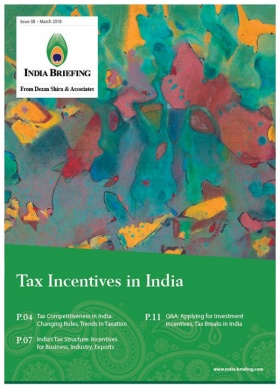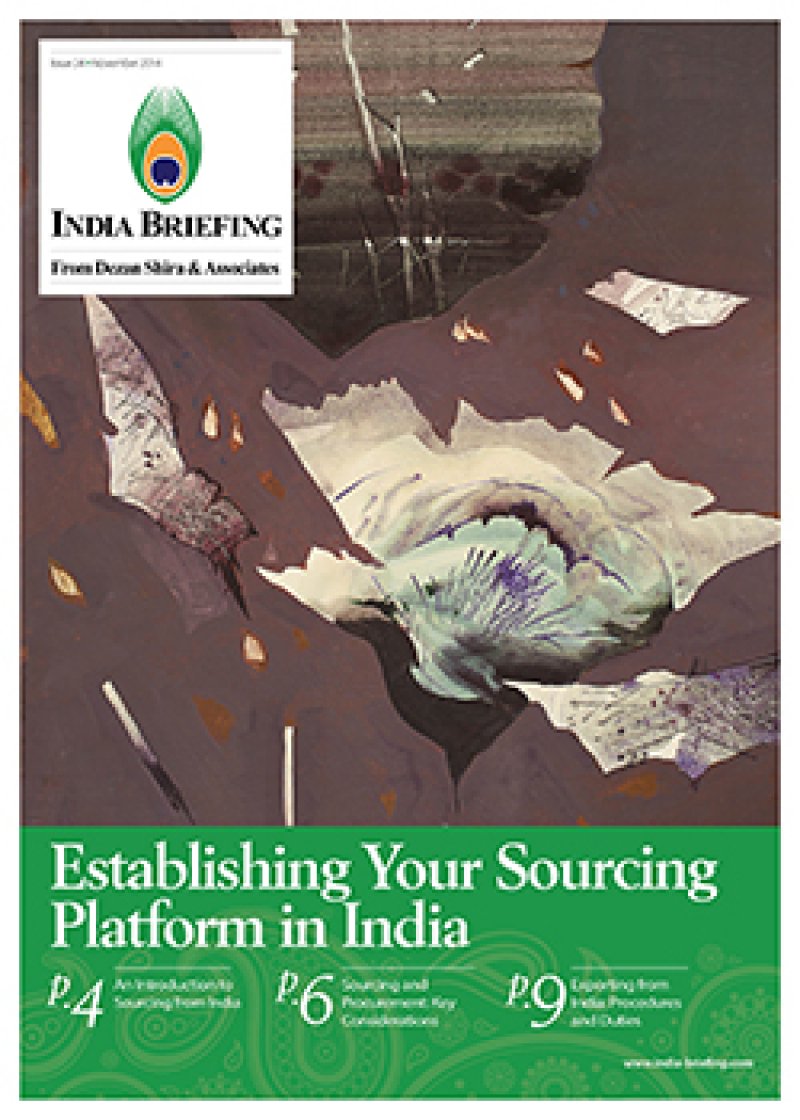India’s Import Policy: Procedures and Duties
To learn about establishing an export-import business in India, read our article here.
In India, the import and export of goods is governed by the Foreign Trade (Development & Regulation) Act, 1992 and India’s Export Import (EXIM) Policy.
India’s Directorate General of Foreign Trade (DGFT) is the principal governing body responsible for all matters related to EXIM Policy.
Importers are required to register with the DGFT to obtain an Importer Exporter Code Number (IEC) issued against their Permanent Account Number (PAN), before engaging in EXIM activities. After an IEC has been obtained, the source of items for import must be identified and declared.
The Indian Trade Classification – Harmonized System (ITC-HS) allows for the free import of most goods without a special import license.
Certain goods that fall under the following categories require special permission or licensing.
1) Licensed (Restricted) Items – Licensed items can only be imported after obtaining an import license from the DGFT. These include some consumer goods such as precious and semi-precious stones, products related to safety and security, seeds, plants, animals, insecticides, pharmaceuticals and chemicals, and some electronic items.
2) Canalized Items – Canalized items can only be imported via specified transportation channels and methods, or through government agencies such as the State Trading Corporation (STC). These include petroleum products, bulk agricultural products such as grains and vegetable oils, and some pharmaceutical products.
3) Prohibited Items – These goods are strictly prohibited from import and include tallow fat, animal rennet, wild animals, and unprocessed ivory.
Import Procedures
All importers must follow detailed customs clearance formalities when importing goods into India. A comprehensive overview of EXIM procedures can be found on the Indian Directorate of General Valuation’s website.

Bill of Entry
Every importer is required to begin by submitting a Bill of Entry under Section 46. This document certifies the description and value of goods entering the country. The Bill of Entry should be submitted as follows:
1) The original and duplicate for customs
2) A copy for the importer
3) A copy for the bank
4) A copy for making remittances
Under the Electronic Data Interchange (EDI), no formal Bill of Entry is required (as it is recorded electronically) but the importer is required to file a cargo declaration after prescribing particulars required for processing of the entry for customs clearance. Bills of Entry can be one of three types:
1) Bill of Entry for Home Consumption – This form is used when the imported goods are to be cleared on payment of full duty. Home consumption means use within India. It is white colored and hence often called the ‘white bill of entry’.
2) Bill of Entry for Housing – If the imported goods are not required immediately, importers may store the goods in a warehouse without the payment of duty under a bond and then clear them from the warehouse when required on payment of duty. This will enable the deferment of payment of the customs duty until goods are actually required. This Bill of Entry is printed on yellow paper and is thus often called the ‘yellow bill of entry’. It is also called the ‘into bond bill of entry’ as the bond is executed for the transfer of goods in a warehouse without paying duty.
3) Bill of Entry for Ex-Bond Clearance – The third type is for ex-bond clearance. This is used for clearance from the warehouse on payment of duty and is printed on green paper.
It is important to note that the rate of duty applicable is as it exists on the date a good is removed from a warehouse. Therefore, if the rate changes after goods have been cleared from a customs port, the customs duty as assessed on a yellow bill of entry (Bill of Entry for Housing) and paid on the value listed on the green bill of entry (Bill of Entry for Ex-Bond Clearance) will not be the same.
Other non-EDI documents
If a Bill of Entry is filed without using the Electronic Data Interchange system, the following documents are also generally required:
- Signed invoice;
- Packing list;
- Bill of lading or delivery order/air waybill;
- GATT declaration form;
- Importer/CHA declaration;
- Import license wherever necessary;
- Letter of credit/bank draft;
- Insurance document;
- Industrial license, if required;
- Test report in case of chemicals;
- Adhoc exemption order;
- DEEC Book/DEPB in original, where applicable;
- Catalogue, technical write up, literature in case of machineries, spares or chemicals as may be applicable;
- Separately split up value of spares, components, and machinery; and,
- Certificate of Origin, if preferential rate of duty is claimed.
Import Duties
The Indian government levies several types of import duties on goods. These include:
Basic Customs Duty
Basic Customs Duty (BCD) is the standard tax rate applied to goods, or the standard preferential rate in the case of goods imported from specified countries.
The rates of customs duties are outlined in the First and Second Schedules of the Customs Tariff Act, 1975.
The First Schedule specifies rates of import duty and the Second specifies rates of export duty. BCD is divided into standard and preferential rates, with goods imported from countries holding trade agreements with the Indian central government eligible for lower preferential rates.
IGST and Compensation Cess
Additional duties of customs, commonly referred to as the Countervailing Duty (CVD) and Special Additional Duty of Customs (SAD), has been be replaced by the levy of the Integrated Goods and Services Tax (IGST), barring a few exceptions, such as pan masala and certain petroleum products. The IGST replaces the previous system of federal and state categories of indirect taxation.
A Customs Duty calculator is made available on the online portal of excise and customs, the ICEGATE website. There are seven rates prescribed for IGST– Nil, 0.25 percent, 3 percent 5 percent, 12 percent, 18 percent, and 28 percent. The actual rate applicable to an item will depend on its classification and will be specified in Schedules notified under Section 5 of the IGST Act, 2017.
Further, a few items such as aerated water products, tobacco products, and motor vehicles, among others, will attract an additional levy of the GST Compensation Cess, over and above IGST. The Cess is calculated on the transaction value or the price at which the goods are sold.
The Goods and Services Tax (Compensation to States) Act, 2017 was enacted to levy Compensation Cess for providing compensation to Indian states for the loss of revenue arising on account of implementation of the Goods and Services Tax from July 1, 2017.
The Compensation Cess on goods imported into India shall be levied and collected in accordance with the provisions of Section 3 of the Customs Tariff Act, 1975, at the point when duties of customs are levied on the said goods under Section 12 of the Customs Act, 1962, on a value determined under the Customs Tariff Act, 1975.
Anti-Dumping Duty
The central government may impose an anti-dumping duty if it determines a good is being imported at below fair market price, and an importer will be notified if this is the case.
The duty cannot exceed the difference between the export and normal price (margin of dumping).
This does not apply to goods imported by 100 percent Export Oriented Units (EOU) and units in Free Trade Zones (FTZs) and Special Economic Zones (SEZs).
If an importer is notified by the federal government then an Anti-Dumping duty is to be imposed, the notification will remain valid for five years with the possibility of being extended to 10 years.
Safeguard Duty
Unlike Anti-Dumping Duty, the imposition of Safeguard Duty does not require the central government to determine a good is being imported at below fair market price.
Safeguard Duty is imposed if the government decides that a sudden increase in exports is causing, or threatens to cause, serious damage to a domestic industry.
A notification regarding the imposition of Safeguard Duty is valid for four years with the possibility of being extended to 10 years.
Protective Duty
A protective duty is sometimes imposed to protect domestic industry from imports.
If the Tariff Commission issues a recommendation for the imposition of a Protective Duty, the central government may choose to impose this at a rate that does not exceed that recommended by the Tariff Commission.
The federal government can specify the period up to which the protective duty will remain in force, reduce or extend the period, and adjust the effective rate.
Social Welfare Surcharge
The Education Cess and Secondary and Higher Education Cess on imported goods is now abolished and replaced by the Social Welfare Surcharge.
This surcharge will be levied at the rate of 10 percent of the aggregate duties of customs, on imported goods.
About Us
India Briefing is published by Asia Briefing, a subsidiary of Dezan Shira & Associates. We produce material for foreign investors throughout Eurasia, including ASEAN, China, Indonesia, Russia, the Silk Road, & Vietnam. For editorial matters please contact us here and for a complimentary subscription to our products, please click here.
Dezan Shira & Associates provide business intelligence, due diligence, legal, tax and advisory services throughout India and the Asian region. We maintain offices in Delhi and Mumbai and throughout China, South-East Asia, India, and Russia. For assistance with India investment issues or into Asia overall, please contact us at india@dezshira.com or visit us at www.dezshira.com.
- Previous Article New Foreign Investment Proposal Checklist Released in India
- Next Article India Mulls Scrapping 30 Percent Domestic Sourcing Requirement















